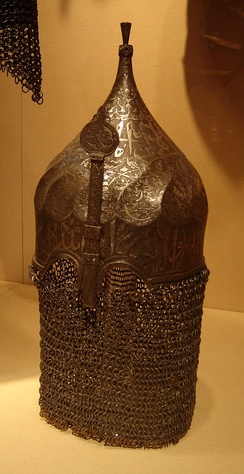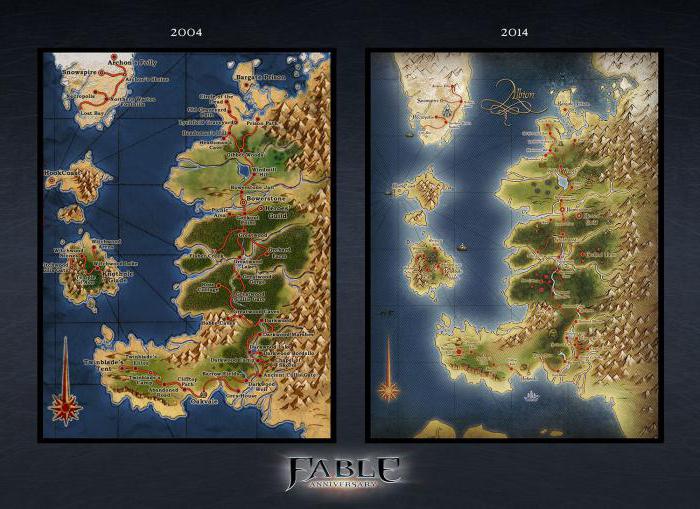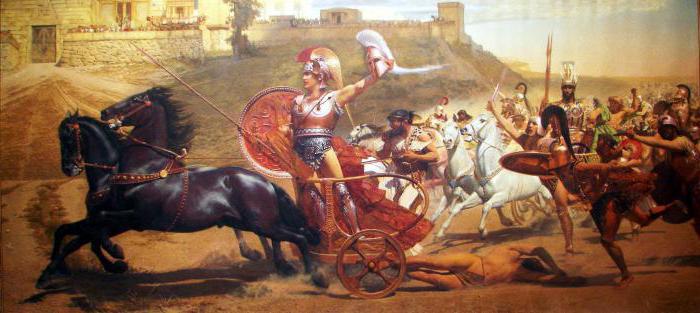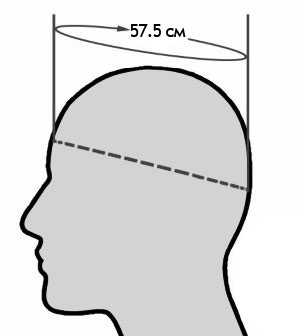Иллирийский шлем. Шлем иллирийский
Иллирийский шлем — Википедия (с комментариями)
Материал из Википедии — свободной энциклопедии
Иллирийские шлемы — первые цельнометаллические шлемы, появившиеся в Древней Греции после «темных веков». По названию местности к северо-западу от Древней Греции (Иллирия), где часто находят такие шлемы, они получили название иллирийских.
В музее Аргоса (Греция) хранится шлем конического типа, собранный из нескольких частей. У него заостренная макушка, увенчанная высоким металлическим гребнем в виде дуги. Шлем найден в захоронении VIII века до н. э. на Пелопоннесе. Такой характерный гребень часто изображался на шлемах ассирийских воинов на барельефах того времени. Форма гребня косвенно указывает на источник возрождения кузнечного ремесла в Элладе. Нижняя часть шлема практически не отличается от форм более позднего иллирийского типа. К VII веку до н. э. бронзовый гребень исчез, как исчезла и восточная конусовидность шлема.
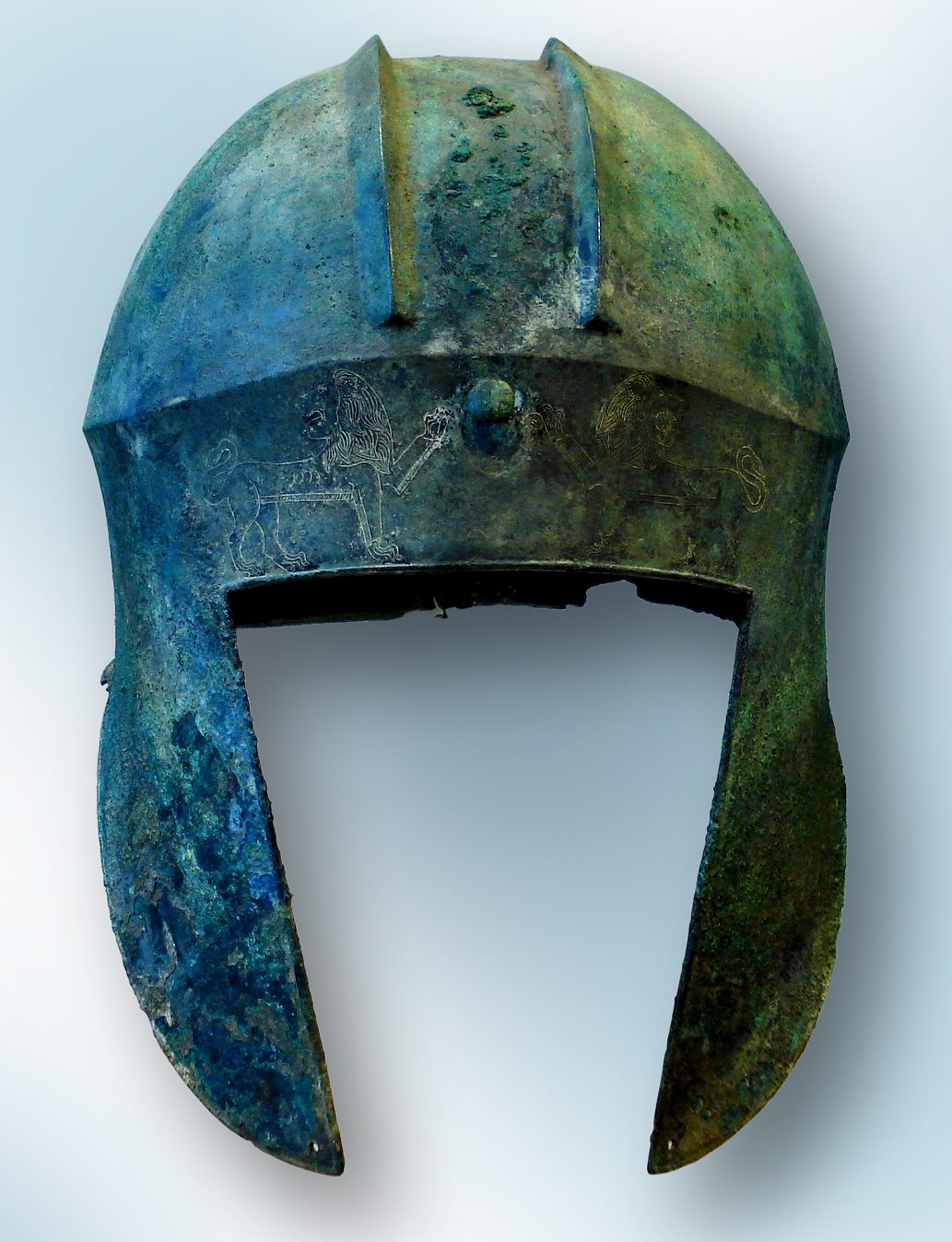
По крайней мере к VI веку до н. э. шлемы иллирийского типа вышли из употребления в Элладе, вытесненные коринфскими, но производились в ремесленных мастерских Эпира и Иллирии до IV века до н. э. Судя по монетам македонского царя Пердикки II, иллирийские шлемы были в ходу на территории Македонии во 2-й половине V века до н. э., их также находят там в воинских захоронениях VI века до н. э.
См. также
Напишите отзыв о статье "Иллирийский шлем"
Отрывок, характеризующий Иллирийский шлем
Лед держал его, но гнулся и трещал, и очевидно было, что не только под орудием или толпой народа, но под ним одним он сейчас рухнется. На него смотрели и жались к берегу, не решаясь еще ступить на лед. Командир полка, стоявший верхом у въезда, поднял руку и раскрыл рот, обращаясь к Долохову. Вдруг одно из ядер так низко засвистело над толпой, что все нагнулись. Что то шлепнулось в мокрое, и генерал упал с лошадью в лужу крови. Никто не взглянул на генерала, не подумал поднять его. – Пошел на лед! пошел по льду! Пошел! вороти! аль не слышишь! Пошел! – вдруг после ядра, попавшего в генерала, послышались бесчисленные голоса, сами не зная, что и зачем кричавшие. Одно из задних орудий, вступавшее на плотину, своротило на лед. Толпы солдат с плотины стали сбегать на замерзший пруд. Под одним из передних солдат треснул лед, и одна нога ушла в воду; он хотел оправиться и провалился по пояс. Ближайшие солдаты замялись, орудийный ездовой остановил свою лошадь, но сзади всё еще слышались крики: «Пошел на лед, что стал, пошел! пошел!» И крики ужаса послышались в толпе. Солдаты, окружавшие орудие, махали на лошадей и били их, чтобы они сворачивали и подвигались. Лошади тронулись с берега. Лед, державший пеших, рухнулся огромным куском, и человек сорок, бывших на льду, бросились кто вперед, кто назад, потопляя один другого. Ядра всё так же равномерно свистели и шлепались на лед, в воду и чаще всего в толпу, покрывавшую плотину, пруды и берег.wiki-org.ru
Иллирийский шлем — Википедия (с комментариями)
Материал из Википедии — свободной энциклопедии
Иллирийские шлемы — первые цельнометаллические шлемы, появившиеся в Древней Греции после «темных веков». По названию местности к северо-западу от Древней Греции (Иллирия), где часто находят такие шлемы, они получили название иллирийских.
В музее Аргоса (Греция) хранится шлем конического типа, собранный из нескольких частей. У него заостренная макушка, увенчанная высоким металлическим гребнем в виде дуги. Шлем найден в захоронении VIII века до н. э. на Пелопоннесе. Такой характерный гребень часто изображался на шлемах ассирийских воинов на барельефах того времени. Форма гребня косвенно указывает на источник возрождения кузнечного ремесла в Элладе. Нижняя часть шлема практически не отличается от форм более позднего иллирийского типа. К VII веку до н. э. бронзовый гребень исчез, как исчезла и восточная конусовидность шлема.
В ранних иллирийских шлемах листы бронзы выгибали по форме головы, соединяли внахлест и скрепляли заклепками в местах соприкосновения, в результате на макушке получались продольные ребра жесткости. Потом научились ковать из цельной болванки, но продольные ребра остались как традиция. Простые с виду шлемы напоминают глубокую каску с длинными ушами. Характерной особенностью шлема служат отсутствие наносника, продольные ребра на макушке, крупные треугольнообразные «уши»-нащёчники и прямоугольный вырез для лица. Длинные нащёчники прикрывали с боков шею, но сзади она оставалась частично открытой. На музейной пластинке из музея Тиран (Албания) шлемы иллирийских воинов украшены длинными конскими гребнями подобно классическим древнегреческим шлемам. Если добавить массивный наносник, прикрыть шею сзади, придать фигурную форму «ушам»-нащечникам и выгнуть их вокруг лица, то шлем перейдет в разряд коринфских.
По крайней мере к VI веку до н. э. шлемы иллирийского типа вышли из употребления в Элладе, вытесненные коринфскими, но производились в ремесленных мастерских Эпира и Иллирии до IV века до н. э. Судя по монетам македонского царя Пердикки II, иллирийские шлемы были в ходу на территории Македонии во 2-й половине V века до н. э., их также находят там в воинских захоронениях VI века до н. э.
См. также
Напишите отзыв о статье "Иллирийский шлем"
Отрывок, характеризующий Иллирийский шлем
– Мы ведь можем попробовать, правда? Да и бабушка нас не оставит, если уж будет по-настоящему опасно. Видимо пока мы ещё можем выбраться сами, если она не приходит. Ты не беспокойся, она нас не бросит. Мне бы её уверенность!.. Хотя обычно я была далеко не из пугливых, но эта ситуация заставляла меня очень сильно нервничать, так как здесь находились не только мы, но и те, за кем мы пришли в эту жуть. А как из данного кошмара выкарабкиваться – я, к сожалению, не знала. – Здесь нету времени, но он приходит обычно через одинаковый промежуток, примерно как были сутки на земле. – Вдруг ответил на мои мысли мальчик. – А сегодня уже был? – явно обрадованная, спросила Стелла. Мальчонка кивнул. – Ну что – пошли? – она внимательно смотрела на меня и я поняла, что она просит «надеть» на них мою «защиту». Стелла первая высунула свою рыжую головку наружу... – Никого! – обрадовалась она. – Ух ты, какой же это ужас!.. Я, конечно, не вытерпела и полезла за ней. Там и правда был настоящий «ночной кошмар»!.. Рядом с нашим странным «местом заточения», совершенно непонятным способом, повешенные «пучками» вниз головой, висели человеческие сущности... Они были подвешены за ноги, и создавали как бы перевёрнутый букет. Мы подошли ближе – ни один из людей не показывал признаков жизни... – Они же полностью «откачаны»! – ужаснулась Стелла. – У них не осталось даже капельки жизненной силы!.. Всё, давайте удирать!!! Мы понеслись, что было сил, куда-то в сторону, абсолютно не зная – куда бежим, просто подальше бы от всей этой, замораживающей кровь, жути... Даже не думая о том, что можем снова вляпаться в такую же, или же ещё худшую, жуть... Вдруг резко потемнело. Иссиня-чёрные тучи неслись по небу, будто гонимые сильным ветром, хотя никакого ветра пока что не было. В недрах чёрных облаков полыхали ослепительные молнии, красным заревом полыхали вершины гор... Иногда набухшие тучи распарывало о злые вершины и из них водопадом лилась тёмно-бурая вода. Вся эта страшная картинка напоминала, самый жуткий из жутких, ночной кошмар.... – Папочка, родимый, мне так страшно! – тоненько взвизгивал, позабыв свою былую воинственность, мальчонка. Вдруг одна из туч «порвалась», и из неё полыхнул ослепительно яркий свет. А в этом свете, в сверкающем коконе, приближалась фигурка очень худого юноши, с острым, как лезвие ножа, лицом. Вокруг него всё сияло и светилось, от этого света чёрные тучи «плавились», превращаясь в грязные, чёрные лоскутки. – Вот это да! – радостно закричала Стелла. – Как же у него это получается?!. – Ты его знаешь? – несказанно удивилась я, но Стелла отрицательно покачала головкой.Иллирийский шлем - WikiVisually
1. Древняя Греция – Ancient Greece was a civilization belonging to a period of Greek history from the Greek Dark Ages of the 12th-9th centuries BC to the end of antiquity. Immediately following this period was the beginning of the Early Middle Ages and this was followed by the period of Classical Greece, an era that began with the Greco-Persian Wars, lasting from the 5th to 4th centuries BC. Due to the conquests by Alexander the Great of Macedonia, Hellenistic civilization flourished from Central Asia to the end of the Mediterranean Sea. Classical Greek culture, especially philosophy, had a influence on ancient Rome. For this reason Classical Greece is generally considered to be the culture which provided the foundation of modern Western culture and is considered the cradle of Western civilization. Classical Antiquity in the Mediterranean region is considered to have begun in the 8th century BC. Classical Antiquity in Greece is preceded by the Greek Dark Ages and this period is succeeded, around the 8th century BC, by the Orientalizing Period during which a strong influence of Syro-Hittite, Jewish, Assyrian, Phoenician and Egyptian cultures becomes apparent. The end of the Dark Ages is also dated to 776 BC. The Archaic period gives way to the Classical period around 500 BC, Ancient Periods Astronomical year numbering Dates are approximate, consult particular article for details The history of Greece during Classical Antiquity may be subdivided into five major periods. The earliest of these is the Archaic period, in which artists made larger free-standing sculptures in stiff, the Archaic period is often taken to end with the overthrow of the last tyrant of Athens and the start of Athenian Democracy in 508 BC. It was followed by the Classical period, characterized by a style which was considered by observers to be exemplary, i. e. classical, as shown in the Parthenon. This period saw the Greco-Persian Wars and the Rise of Macedon, following the Classical period was the Hellenistic period, during which Greek culture and power expanded into the Near and Middle East. This period begins with the death of Alexander and ends with the Roman conquest, Herodotus is widely known as the father of history, his Histories are eponymous of the entire field. Herodotus was succeeded by authors such as Thucydides, Xenophon, Demosthenes, Plato, most of these authors were either Athenian or pro-Athenian, which is why far more is known about the history and politics of Athens than those of many other cities. Their scope is limited by a focus on political, military and diplomatic history, ignoring economic. In the 8th century BC, Greece began to emerge from the Dark Ages which followed the fall of the Mycenaean civilization, literacy had been lost and Mycenaean script forgotten, but the Greeks adopted the Phoenician alphabet, modifying it to create the Greek alphabet. The Lelantine War is the earliest documented war of the ancient Greek period and it was fought between the important poleis of Chalcis and Eretria over the fertile Lelantine plain of Euboea. Both cities seem to have suffered a decline as result of the long war, a mercantile class arose in the first half of the 7th century BC, shown by the introduction of coinage in about 680 BC
2. Иллирия – In classical antiquity, Illyria was a region in the western part of the Balkan Peninsula inhabited by the Illyrians. The prehistory of Illyria and the Illyrians is known from archaeological evidence, the Romans conquered the region in 168 BC in the aftermath of the Illyrian Wars. The Roman term Illyris was sometimes used to define an area north of the Aous valley, in Greek mythology, the name of Illyria is aetiologically traced to Illyrius, the son of Cadmus and Harmonia, who eventually ruled Illyria and became the eponymous ancestor of the Illyrians. A later version of the myth identifies Polyphemus and Galatea as parents of Celtus, Galas, ancient Greek writers used the name Illyrian to describe peoples between the Liburnians and Epirus. In the Roman period, Illyricum was used for the area between the Adriatic and Danube, the term was in a way of pars pro toto. The earliest recorded Illyrian kingdom was that of the Enchele in the 8th century BC, the era in which we observe other Illyrian kingdoms begins approximately at 400 BC and ends at 167 BC. The Autariatae under Pleurias were considered to have been a kingdom, the Kingdom of the Ardiaei began at 230 BC and ended at 167 BC. The most notable Illyrian kingdoms and dynasties were those of Bardyllis of the Dardani and of Agron of the Ardiaei who created the last, Agron ruled over the Ardiaei and had extended his rule to other tribes as well. As for the Dardanians, they always had separate domains from the rest of the Illyrians, the Illyrian kingdoms were composed of small areas within the region of Illyria. Only the Romans ruled the entire region, polybius gives as an image of society within an Illyrian kingdom as peasant infantry fought under aristocrats which he calls in Greek Polydynastae where each one controlled a town within the kingdom. The monarchy was established on hereditary lines and Illyrian rulers used marriages as a means of alliance with other powers, pliny writes that the people that formed the nucleus of the Illyrian kingdom were Illyrians proper or Illyrii Proprie Dicti. They were the Taulantii, the Pleraei, the Endirudini, Sasaei, Grabaei and these later joined to form the Docleatae. The Romans defeated Gentius, the last king of Illyria, at Scodra in 168 BC and captured him, four client-republics were set up, which were in fact ruled by Rome. Later, the region was governed by Rome and organized as a province. The Roman province of Illyricum replaced the independent kingdom of Illyria. It stretched from the Drilon river in modern Albania to Istria in the west, although this division occurred in 10 AD, the term Illyria remained in use in Late Latin and throughout the medieval period. After the division of the Roman Empire, the bishops of Thessalonica appointed papal vicars for Illyricum, the first of these vicars is said to have been Bishop Acholius or Ascholius, the friend of St. Basil. The patriarchs of Constantinople succeeded in bringing Illyria under their jurisdiction in the 8th century, several armorials of the Early modern period, popularly called the Illyrian Armorials, depicted fictional coats of arms of Illyria
3. Аргос (город) – Argos is a city in Argolis, Peloponnese, Greece and one of the oldest continuously inhabited cities in the world. It is also a bishopric and present Latin Catholic titular see. It is the biggest town in Argolis and a center for the area. Since the 2011 local government reform it has been part of the municipality of Argos-Mykines, the municipal unit has an area of 138.138 km2. It is 11 kilometres from Nafplion, which was its historic harbour, a settlement of great antiquity, Argos has been continuously inhabited as at least a substantial village for the past 7,000 years. The city is a member of the Most Ancient European Towns Network, a resident of the city of Argos is known as an Argive. However, this term is used to refer to those ancient Greeks generally who assaulted the city of Troy during the Trojan War. Numerous ancient monuments can be found in the city today, the most famous of which is the Heraion of Argos, agriculture is the mainstay of the local economy. The name of the city is ancient and several etymological theories have been proposed as an explanation to its meaning. The most popular one maintains that the name of the city is a remainder from the Pelasgian language, i. e. the one used by the people who first settled in the area, in which Argos meant plain. Alternatively, the name is associated with Argos, the king of the city in ancient times. It is also believed that Argos is linked to the word αργός, which meant white, possibly, according to Strabo, the name could have even originated from the word αγρός by antimetathesis of the consonants. As a strategic location on the plain of Argolis, Argos was a major stronghold during the Mycenaean era. There is evidence of settlement in the area starting with a village about 7000 years ago in the late Neolithic. It was colonized in prehistoric times by the Pelasgian Greeks, since that time, Argos has been continually inhabited at the same geographical location. Its creation is attributed to Phoroneus, with its first name having been Phoronicon Asty, the city is located at a rather propitious area, among Nemea, Corinth and Arcadia. It also benefitted from its proximity to lake Lerna, which, during the Dorian invasion, c.1100 BC, Argos was divided into four neighbourhoods, each of them inhabited by a different phyle. Argos experienced its greatest period of expansion and power under the energetic 7th century BC ruler King Pheidon, under Pheidon, Argos regained sway over the cities of the Argolid and challenged Sparta’s dominance of the Peloponnese
4. VIII век до н. э. – The 8th century BC started the first day of 800 BC and ended the last day of 701 BC. The 8th century BC was a period of changes in civilizations. In Egypt, the 23rd and 24th dynasties led to rule from Nubia in the 25th Dynasty, the Neo-Assyrian Empire reaches the peak of its power, conquering the Kingdom of Israel as well as nearby countries. Greece colonizes other regions of the Mediterranean Sea and Black Sea, Rome is founded in 753 BC, and the Etruscan civilization expands in Italy. The 8th century BC is conventionally taken as the beginning of Classical Antiquity, with the first Olympiad set at 776 BC, iron Age India enters the later Vedic period. Vedic ritual is annotated in many schools in Brahmana commentaries. Late 8th century BC, Earrings, crown and rosettes, from the tomb of Queen Yabay in Kalhu are made and they are now at Iraq Museum, Baghdad. 797 BC, Ardysus I becomes king of Lydia,797 BC, Thespieus, King of Athens, dies after a reign of 27 years and is succeeded by his son Agamestor. 783 BC, Shalmaneser IV succeeds his father Adad-nirari III as king of Assyria,782 BC, Founding of Erebuni by the orders of King Argishtis I at the site of current-day Yerevan. 782 BC, Death of King Xuan of Zhou, King of the Zhou Dynasty of China,781 BC, King You of Zhou becomes King of the Zhou Dynasty of China. 780 BC, The first historic solar eclipse is recorded in China,778 BC, Agamestor, King of Athens, dies after a reign of 17 years and is succeeded by his son Aeschylus. 776 BC, retrospectively set as the first Olympiad, the history of the Olympic Games is believed to reach as far back as the 13th century BC.774 BC, End of the reign of king Pygmalion of Tyre. 773 BC, Death of Shoshenq III, king of Egypt,773 BC, Ashur-Dan III succeeds his brother Shalmaneser IV as king of Assyria. 771 BC, End of the Western Zhou Dynasty in China as western barbarian tribes sack the capital Hao, King You of Zhou is killed. Crown Prince Ji Yijiu escapes and will reign as King Ping of Zhou,770 BC, Beginning of the Eastern Zhou Dynasty in China as King Ping of Zhou becomes the first King of the Zhou to rule from the new capital of Chengzhou. June 15,763 BC, A solar eclipse at this date is used to fix the chronology of the Ancient Near East, mid-8th century BC, Model of temple, found in the Sanctuary of Hera, Argos, is made. It is now at National Archeological Museum, Athens,755 BC, Ashur-nirari V succeeds Ashur-Dan III as king of Assyria. 755 BC, Aeschylus, King of Athens, dies after a reign of 23 years and is succeeded by Alcmaeon,753 BC, Alcmaeon, King of Athens, dies after a reign of 2 years
5. Пелопоннес – The Peloponnese or Peloponnesus is a peninsula and geographic region in southern Greece. It is separated from the part of the country by the Gulf of Corinth. During the late Middle Ages and the Ottoman era, the peninsula was known as the Morea, the peninsula is divided among three administrative regions, most belongs to the Peloponnese region, with smaller parts belonging to the West Greece and Attica regions. In 2016, Lonely Planet voted the Peloponnese the top spot of their Best in Europe list, the Peloponnese is a peninsula that covers an area of some 21,549.6 square kilometres and constitutes the southernmost part of mainland Greece. It has two connections with the rest of Greece, a natural one at the Isthmus of Corinth. The peninsula has an interior and deeply indented coasts. The Peloponnese possesses four south-pointing peninsulas, the Messenian, the Mani, the Cape Malea, mount Taygetus in the south is the highest mountain in the Peloponnese, at 2,407 metres. Οther important mountains include Cyllene in the northeast, Aroania in the north, Erymanthos and Panachaikon in the northwest, Mainalon in the center, the entire peninsula is earthquake prone and has been the site of many earthquakes in the past. The longest river is the Alfeios in the west, followed by the Evrotas in the south, extensive lowlands are found only in the west, with the exception of the Evrotas valley in the south and in the Argolid in the northeast. The Peloponnese is home to spectacular beaches, which are a major tourist draw. Two groups of islands lie off the Peloponnesian coast, the Argo-Saronic Islands to the east, the island of Kythera, off the Epidaurus Limera peninsula to the south of the Peloponnese, is considered to be part of the Ionian Islands. The island of Elafonissos used to be part of the peninsula but was separated following the quake of 365 AD. Since antiquity, and continuing to the present day, the Peloponnese has been divided into seven regions, Achaia, Corinthia, Argolid, Arcadia, Laconia, Messinia. Each of these regions is headed by a city, the largest city is Patras in Achaia, followed by Kalamata in Messinia. The peninsula has been inhabited since prehistoric times and its modern name derives from ancient Greek mythology, specifically the legend of the hero Pelops, who was said to have conquered the entire region. The name Peloponnesos means Island of Pelops, the Mycenaean civilization, mainland Greeces first major civilization, dominated the Peloponnese in the Bronze Age from its stronghold at Mycenae in the north-east of the peninsula. The Mycenean civilization collapsed suddenly at the end of the 2nd millennium BC, archeological research has found that many of its cities and palaces show signs of destruction. The subsequent period, known as the Greek Dark Ages, is marked by an absence of written records
6. Ассирия – Assyria was a major Mesopotamian East Semitic-speaking kingdom and empire of the ancient Near East and the Levant. Centered on the Tigris in Upper Mesopotamia, the Assyrians came to rule powerful empires at several times. Assyria is named after its capital, the ancient city of Aššur. In the 25th and 24th centuries BC, Assyrian kings were pastoral leaders, Assyria can also refer to the geographic region or heartland where Assyria, its empires and the Assyrian people were centered. The indigenous modern Eastern Aramaic-speaking Assyrian Christian ethnic minority in northern Iraq, north east Syria, southeast Turkey, in prehistoric times, the region that was to become known as Assyria was home to a Neanderthal culture such as has been found at the Shanidar Cave. The earliest Neolithic sites in Assyria were the Jarmo culture c.7100 BC and Tell Hassuna, during the 3rd millennium BC, a very intimate cultural symbiosis developed between the Sumerians and the Akkadians throughout Mesopotamia, which included widespread bilingualism. The influence of Sumerian on Akkadian, and vice versa, is evident in all areas, from lexical borrowing on a scale, to syntactic, morphological. This has prompted scholars to refer to Sumerian and Akkadian in the third millennium BC as a sprachbund and it is highly likely that the city was named in honour of its patron Assyrian god with the same name. The city of Aššur, together with a number of other Assyrian cities, however it is likely that they were initially Sumerian-dominated administrative centres. In the late 26th century BC, Eannatum of Lagash, then the dominant Sumerian ruler in Mesopotamia, similarly, in c. the early 25th century BC, Lugal-Anne-Mundu the king of the Sumerian state of Adab lists Subartu as paying tribute to him. Of the early history of the kingdom of Assyria, little is known, in the Assyrian King List, the earliest king recorded was Tudiya. According to Georges Roux he would have lived in the mid 25th century BC, Tudiya was succeeded on the list by Adamu, the first known reference to the Semitic name Adam and then a further thirteen rulers. The earliest kings, such as Tudiya, who are recorded as kings who lived in tents, were independent semi-nomadic pastoralist rulers and these kings at some point became fully urbanised and founded the city state of Ashur in the mid 21st century BC. During the Akkadian Empire, the Assyrians, like all the Mesopotamian Semites, became subject to the dynasty of the city state of Akkad, the Akkadian Empire founded by Sargon the Great claimed to encompass the surrounding four quarters. Assyrian rulers were subject to Sargon and his successors, and the city of Ashur became an administrative center of the Empire. On those tablets, Assyrian traders in Burushanda implored the help of their ruler, Sargon the Great, the name Hatti itself even appears in later accounts of his grandson, Naram-Sin, campaigning in Anatolia. Assyrian and Akkadian traders spread the use of writing in the form of the Mesopotamian cuneiform script to Asia Minor, the Akkadian Empire was destroyed by economic decline and internal civil war, followed by attacks from barbarian Gutian people in 2154 BC. The rulers of Assyria during the period between c.2154 BC and 2112 BC once again fully independent, as the Gutians are only known to have administered southern Mesopotamia
7. VII век до н. э. – The 7th century BC began the first day of 700 BC and ended the last day of 601 BC. The Assyrian Empire continued to dominate the Near East during this century, exercising power over neighbors like Babylon. In the last two decades of the century, however, the empire began to unravel as numerous enemies made alliances, the Assyrians finally left the world stage permanently when their capital Nineveh was destroyed in 612 BC. These events gave rise to the Neo-Babylonian Empire, which would dominate the region for much of the following century,699 BC, Khallushu succeeds Shuttir-Nakhkhunte as king of the Elamite Empire. 697 BC, Death of King Huan of Zhou, King of the Zhou Dynasty of China,696 BC, King Zhuang of Zhou becomes King of the Zhou Dynasty of China. 696 BC, The Cimmerians ravage Phrygia, possible migration of the Armenians,691 BC, King Sennacherib of Assyria defeats king Humban-nimena of Elam in the Battle of Halule. 690 BC, Taharqa, a king of the Twenty-fifth Dynasty,689 BC, King Sennacherib of Assyria sacks Babylon. 687 BC, Gyges becomes king of Lydia,687 BC, Hezekiah succeeded by Manasseh as king of Judah. 682 BC, Death of King Zhuang of Zhou, King of the Zhou Dynasty of China,681 BC, King Xi of Zhou becomes King of the Zhou Dynasty of China. 681 BC, Esarhaddon succeeds Sennacherib as king of Assyria,677 BC, Death of King Li of Zhou, King of the Zhou Dynasty of China. 677 BC, Esarhaddon leads the Assyrian army against rebellious Arab tribes, advances as far as the Brook of Egypt,676 BC, King Hui of Zhou becomes King of the Zhou Dynasty of China. 675 BC, Esarhaddon begins the rebuilding of Babylon,674 BC, Esarhaddon puts down a revolt in Ashkelon supported by Taharqa, king of Egypt. In response, the Assyrians invade Egypt, but Taharqa is able to hold the invaders off,673 BC, Tullus Hostilius becomes king of Rome. 671 BC, Esarhadon again invades Egypt, capturing Memphis as well as a number of the royal family,669 BC, Assurbanipal succeeds his father Esarhaddon as king of Assyria. 669 BC, Argos defeats Sparta for the last time, this using a Phalanx. 668 BC, Shamash-shum-ukin, son of Esarhaddon, becomes King of Babylon,668 BC, Egypt revolts against Assyria. 668 BC, Nineveh, capital of Assyria becomes the largest city of the world,667 BC, Byzantium founded by Megaran colonists under Byzas. 664 BC, First naval battle in Greek recorded history, between Corinth and Corcyra,664 BC, Assurbanipal captures and sacks Thebes, Egypt
8. Арголида – Argolis or the Argolid is one of the regional units of Greece. It is part of the region of Peloponnese, situated in the part of the Peloponnese peninsula and part of the tripoint area of Argolis. Much of the territory of region is situated in the Argolid Peninsula. Most arable land lies in the part of Argolis. Its primary agricultural resources are oranges and olives, Argolis has a coastline on the Saronic Gulf in the northeast and on the Argolic Gulf in the south and southeast. Notable mountains ranges are the Oligyrtos in the northwest, Lyrkeio and Ktenia in the west, Argolis has land borders with Arcadia to the west and southwest, Corinthia to the north, and the Islands regional unit to the east. Parts of the history of the area can be found in the articles on Argos, Mycenae, Epidaurus, Nafplio, Troezen, Ermioni, Kranidi, from 1833 to 1899, Argolis was part of Argolidocorinthia, which included present Corinthia, Hydra, Spetses and Kythira. It joined Corinthia to form Argolidocorinthia again in 1909, forty years later, in 1949, Argolis was finally separated from Corinthia. The regional unit Argolis is subdivided into 4 municipalities and these are, Argos-Mykines Epidaurus Ermionida Nafplio As a part of the 2011 Kallikratis government reform, the regional unit Argolis was created out of the former prefecture Argolis. The prefecture had the territory as the present regional unit
9. Бронза – These additions produce a range of alloys that may be harder than copper alone, or have other useful properties, such as stiffness, ductility, or machinability. The archeological period where bronze was the hardest metal in use is known as the Bronze Age. In the ancient Near East this began with the rise of Sumer in the 4th millennium BC, with India and China starting to use bronze around the same time, everywhere it gradually spread across regions. The Bronze Age was followed by the Iron Age starting from about 1300 BC and reaching most of Eurasia by about 500 BC, the discovery of bronze enabled people to create metal objects which were harder and more durable than previously possible. Bronze tools, weapons, armor, and building such as decorative tiles were harder and more durable than their stone. It was only later that tin was used, becoming the major ingredient of bronze in the late 3rd millennium BC. Tin bronze was superior to arsenic bronze in that the process could be more easily controlled. Also, unlike arsenic, metallic tin and fumes from tin refining are not toxic, the earliest tin-alloy bronze dates to 4500 BCE in a Vinča culture site in Pločnik. Other early examples date to the late 4th millennium BC in Africa, Susa and some ancient sites in China, Luristan, ores of copper and the far rarer tin are not often found together, so serious bronze work has always involved trade. Tin sources and trade in ancient times had a influence on the development of cultures. In Europe, a source of tin was the British deposits of ore in Cornwall. In many parts of the world, large hoards of bronze artefacts are found, suggesting that bronze also represented a store of value, in Europe, large hoards of bronze tools, typically socketed axes, are found, which mostly show no signs of wear. With Chinese ritual bronzes, which are documented in the inscriptions they carry and from other sources and these were made in enormous quantities for elite burials, and also used by the living for ritual offerings. Pure iron is soft, and the process of beating and folding sponge iron to wrought iron removes from the metal carbon. Careful control of the alloying and tempering eventually allowed for wrought iron with properties comparable to modern steel, Bronze was still used during the Iron Age, and has continued in use for many purposes to the modern day. Among other advantages, it does not rust, the weaker wrought iron was found to be sufficiently strong for many uses. Archaeologists suspect that a disruption of the tin trade precipitated the transition. The population migrations around 1200–1100 BC reduced the shipping of tin around the Mediterranean, limiting supplies, there are many different bronze alloys, but typically modern bronze is 88% copper and 12% tin
10. Заклёпка – A rivet is a permanent mechanical fastener. Before being installed, a rivet consists of a cylindrical shaft with a head on one end. The end opposite to the head is called the tail. On installation the rivet is placed in a punched or drilled hole, in other words, pounding creates a new head on the other end by smashing the tail material flatter, resulting in a rivet that is roughly a dumbbell shape. To distinguish between the two ends of the rivet, the head is called the factory head and the deformed end is called the shop head or buck-tail. Because there is effectively a head on each end of a rivet, it can support tension loads, however. Bolts and screws are better suited for tension applications, solid rivets consist simply of a shaft and head that are deformed with a hammer or rivet gun. A rivet compression or crimping tool can also deform this type of rivet and this tool is mainly used on rivets close to the edge of the fastened material, since the tool is limited by the depth of its frame. A rivet compression tool does not require two people, and is generally the most foolproof way to solid rivets. Solid rivets are used in applications where reliability and safety count, a typical application for solid rivets can be found within the structural parts of aircraft. Hundreds of thousands of rivets are used to assemble the frame of a modern aircraft. Such rivets come with rounded or 100° countersunk heads, typical materials for aircraft rivets are aluminium alloys, titanium, and nickel-based alloys. Some aluminum alloy rivets are too hard to buck and must be softened by solution treating prior to being bucked, ice box aluminum alloy rivets harden with age, and must likewise be annealed and then kept at sub-freezing temperatures to slow the age-hardening process. Steel rivets can be found in structures such as bridges, cranes. The setting of these fasteners requires access to both sides of a structure, solid rivets are driven using a hydraulically, pneumatically, or electromagnetically driven squeezing tool or even a handheld hammer. Applications where only one side is accessible require blind rivets, high-strength bolts have largely replaced structural steel rivets. Indeed, the latest steel construction specifications published by AISC no longer covers their installation, the reason for the change is primarily due to the expense of skilled workers required to install high strength structural steel rivets. Whereas two relatively unskilled workers can install and tighten high strength bolts, it takes a minimum of four highly skilled riveters to install rivets, at a central location near the areas being riveted, a furnace was set up
wikivisually.com

